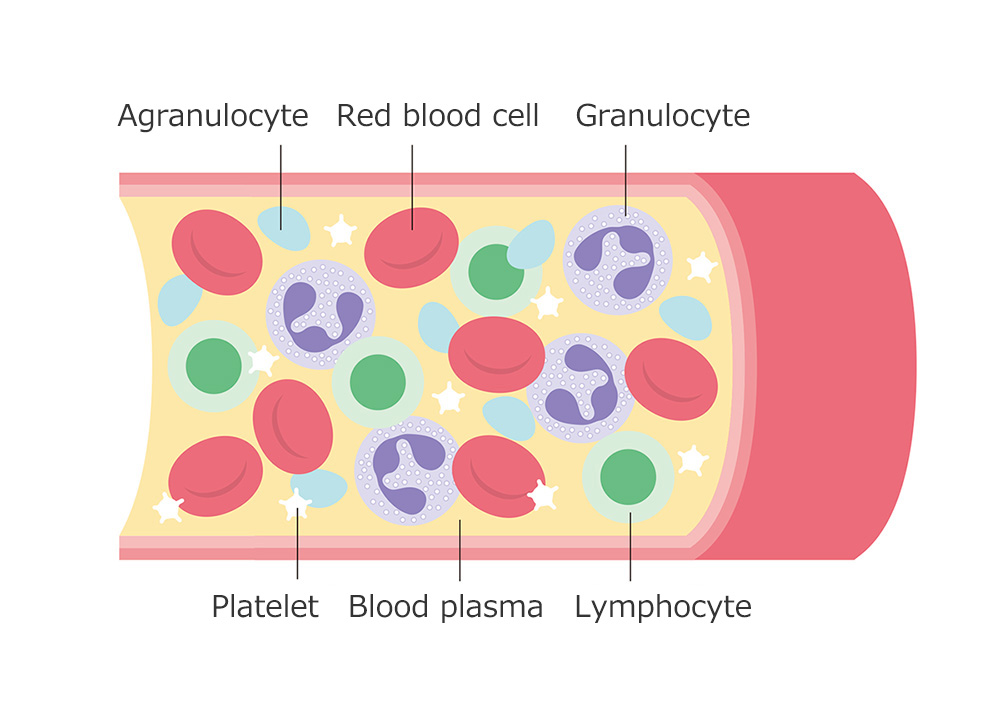Ohu University Dr. Yuichi Koike in School of Pharmaceutical Sciences presented a research result about an accomplishment of improving, with NMR Pipetector, the deterioration of human platelet aggregation in blood with time at the 24th Micro Dialysis Research Society at Ochanomizu University on Dec. 14, 2013.
Presentation content
Purpose
NMR Pipetector is a device to reduce iron rust (oxidized iron), which causes water discoloration in water pipes, to magnetite, a substance insoluble in water. In other word, the device “purifies” the rust.
NMR Pipetector will be effective just by fitting it on water supply pipes. It emits electromagnetic waves to water flowing inside pipes without electricity or any outer power source.
We carried out a study of NMR Pipetector in the belief the device could also affect human body; that is to remove or relieve several types of oxidative stress triggered by oxidative reactions in living bodies if we apply the reducibility of NMR Pipetector to organism.
Method
To successfully apply the NMR Pipetector’s reducibility to human, Japan System Planning Co. has developed a device NOMOA that emit electromagnetic waves to fingers.
In vivo experiment No.1
1. Measuring the d-ROM and BAP amounts as reference values:
After inserting a pointing finger in NOMOR for 10 minutes, we measured the d-ROM and BAP amounts in blood plasma in the sampled blood with FRAS4, a device made by Wismerll Co., Ltd.
2.Measuring the amount of activity of a mouse:
We put a 30-gram male mouse in NMR Pipetector PT-50DS and let it move freely for 10 minutes. We then took it out and put it in SUPERMEX PAT.P, a device made by Muromachi Kikai Co., and measured its amount of physical activity for 24 hours.
3.A perfusion experiment on a rat’s brain:
We inserted and tightly fixed a micro dialysis tube into a SD rat’s amygdala and observed the change in nitric oxide levels before and after adding stress to the rat.
In vivo experiment No.2
1. Effect on human platelets:
We created platelet-rich plasma from a sampled human blood and put it in NMR Pipetector PT-20DS and PT-30DS as shown in the photo and shook the devices at room temperature for 14 hours so that platelets would not deposit or aggregate. After that, we measured lag time, the emission level of nitric oxide and the maximum aggregation number of collagen-induced platelets.
2. Measuring nitric oxide level:
We measured the concentration level of nitric oxide in blood plasma with ENO-200, a device originally made by EICOM Co., Ltd.
Ethical codes:
We obtained a research ethics committee’s approval prior to the above experiments.
Result
Inserting a pointing finger to NOMOA for 10 minutes, the d-ROM amount significantly dropped. However, no change was observed in the BAP amount. Collagen-induced platelet aggregation did not show difference as a result of an in vitro experiment as platelet aggregation was 60% when sampling blood. After 14 hours, platelet aggregation decreased to 45.5%.
On the other hand, platelet-rich plasma kept a significant aggregation at 51.4% (P<0.4%) in an experiment using NMR Pipetector.
It was also clear that time lag was apparently shortened significantly.
Studying the influence of NMR Pipetector on synthesis capability of the nitric oxide at the time, its emission level emitted from the platelets was comparably high. This result indicated retention of the platelet viability.
Consideration
We believe NMR Pipetector turns water high reducible with electromagnetic wave emission. The in vivo experiment revealed NMR Pipetector decreased the level of oxidative stress when emitting the electromagnetic waves to human blood.
We also examined the effects on platelets in the in vitro experiment in which revealed that the electromagnetic waves significantly prolonged both retention of the collagen-induced platelet aggregation and the synthetic ability of nitric oxide.
Conclusion
We believe NMR Pipetector can be used as a treatment to relieve stress.
Researchers’ profiles
- Ohu University Dr. Yuichi Koike in Department of Drug Metabolism and Clinical Pharmacokinetic, School of Pharmaceutical Sciences
- Ohu University Dr. Naomasa Yamamoto in Department of Biochemistry, School of Pharmaceutical Sciences
- Ohu University Dr. Shou Nakadate in Department of Pharmaceutical Chemistry, School of Pharmaceutical Sciences
- Dr. Katusuki Kumano from Japan System Planning Co., Ltd.
- Mr. Noboru Kamimeka from Japan System Planning Co., Ltd.
- Ohu University Assistant Rie Terasawa in Department of Dental Pharmacology, School of Dentistry
- Ohu University Dr. Norifumi Yonehara in Department of Dental Pharmacology, School of Dentistry



コメント